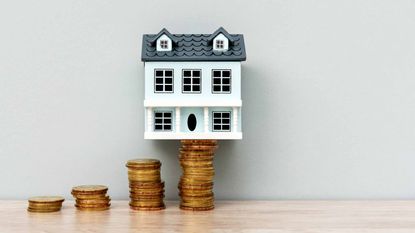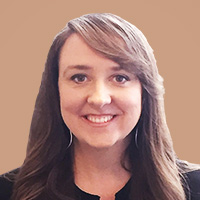Buy a Home With a Reverse Mortgage
A reverse mortgage for purchase may help some seniors finance a new place to live.


Most seniors take out a reverse mortgage to help them stay in their existing home as they get older. But Myra Simmons, 67, took advantage of a little-known product: She used a reverse mortgage to finance a new home.
Myra's 83-year-old husband, Billy, was having trouble using the stairs in their two-story townhome in Fort Myers, Fla. The couple sold their home and used a "reverse mortgage for purchase" to move into a one-story house nearby last summer. "Now I take what would have been my mortgage payment and put it in savings," says Myra, who works for the local county sheriff's office.
The Home Equity Conversion Mortgage (HECM) for Purchase was created by Congress four years ago to streamline home-buying transactions and cut costs, says Peter Bell, president of the National Reverse Mortgage Lenders Association. Before, seniors would buy a new home, incurring closing costs, and then take out a reverse mortgage on the new home, triggering new closing costs. The HECM for Purchase rolls this into one transaction and one set of closing costs.

Sign up for Kiplinger’s Free E-Newsletters
Profit and prosper with the best of expert advice on investing, taxes, retirement, personal finance and more - straight to your e-mail.
Profit and prosper with the best of expert advice - straight to your e-mail.
But the loan has had a slow take-up rate, Bell says. "It's a concept people don't fully understand," he says.
As with a traditional HECM, a homeowner must be 62 or older to qualify for the federally insured HECM for Purchase. You don't make payments while you live in the house, but the loan and interest come due when you sell, move out for 12 months or more, or die.
Borrowers generally get a fixed-rate, lump sum loan, which goes toward the house purchase. The balance starts accruing interest immediately. You can leave some reverse mortgage proceeds in a line of credit for future use by taking an adjustable-rate loan, and you will pay interest only on the proceeds you use.
Unlike a conventional HECM, the HECM for Purchase requires a down payment. When you take out a conventional reverse mortgage, the loan proceeds are based on the equity in your home. With the new product, you start out with no equity because you don't own the new house yet.
For there to be equity to cover the accrued interest, the HECM for Purchase requires that you pay about half the home's sales price with your own cash. The reverse mortgage picks up the difference. "Essentially, the money you're putting in is your equity," says Ted George, a certified financial planner in Scotts Valley, Cal.To pay your half, you can use money from savings, the sale of your other house, or a gift from a family member. But the money cannot be borrowed.
Age Makes a Difference
Like any reverse mortgage, the older you are, the more money you can get from the loan and the less you must bring to the closing table. For instance, a 62-year-old who buys a $400,000 home with a reverse mortgage for purchase must make a down payment of $159,450, according to a recent quote using All Reverse Mortgage Company's calculator. He can get a loan for $250,000 at a fixed rate of 3.99%, and the proceeds will cover $9,450 in fees and $240,550 of the purchase price.
If instead the homeowner is 82, the down payment drops to $115,450. The loan proceeds, which cover fees and the rest of the home price, rise to $294,000.
Be careful, though. While you don't have to make monthly payments, the interest can eventually devour the money you put down. "If you live there long enough, the equity could disappear," says Anthony Webb, a research economist at the Center for Retirement Research at Boston College. This could be an issue for seniors who want to leave the house to heirs or later need the equity to pay for long-term care.
You must still pay insurance, maintenance and taxes on the home—or the lender can foreclose. Keep that in mind if you trade up to a house that has more expensive upkeep than your current home. And snowbirds, take note: You can only get a reverse mortgage for a home that will be your primary residence.
Haven't yet filed for Social Security? Create a personalized strategy to maximize your lifetime income from Social Security. Order Kiplinger’s Social Security Solutions today.

-
 Starbucks BOGO and New Sweet and Spicy Drinks
Starbucks BOGO and New Sweet and Spicy DrinksFor a limited time, Starbucks is announcing four new "swicy" drinks that are both spicy and sweet.
By Kathryn Pomroy Published
-
 Stock Market Today: Dow Slips After Travelers' Earnings Miss
Stock Market Today: Dow Slips After Travelers' Earnings MissThe property and casualty insurer posted a bottom-line miss as catastrophe losses spiked.
By Karee Venema Published
-
 403(b) Contribution Limits for 2024
403(b) Contribution Limits for 2024retirement plans Teachers and nonprofit workers can contribute more to a 403(b) retirement plan in 2024 than they could in 2023.
By Jackie Stewart Published
-
 Roth IRA Contribution Limits for 2024
Roth IRA Contribution Limits for 2024Roth IRAs Roth IRA contribution limits have gone up for 2024. Here's what you need to know.
By Jackie Stewart Published
-
 7 Things Medicare Doesn’t Cover
7 Things Medicare Doesn’t CoverHealthy Living on a Budget Medicare Part A and Part B leave some pretty significant gaps in your health-care coverage. But Medicare Advantage has problems, too.
By Donna LeValley Last updated
-
 Best Foreclosure Sites for Finding Properties
Best Foreclosure Sites for Finding PropertiesMaking Your Money Last Wondering how to find foreclosed homes for sale for your next residence or to flip for a profit? These websites will guide you to foreclosures and real estate-owned properties to buy.
By Bob Niedt Last updated
-
 Luxury Home Prices Rise as the Rich Dodge High Mortgage Rates
Luxury Home Prices Rise as the Rich Dodge High Mortgage RatesLuxury home prices rose 9% to the highest third-quarter level on record, Redfin reports, growing nearly three times faster than non-luxury prices.
By Kathryn Pomroy Published
-
 Four Tips for Renting Out Your Home on Airbnb
Four Tips for Renting Out Your Home on Airbnbreal estate Here's what you should know before listing your home on Airbnb.
By Miriam Cross Published
-
 Five Ways to a Cheap Last-Minute Vacation
Five Ways to a Cheap Last-Minute VacationTravel Procrastinator? No matter. You can pull off a fun and memorable getaway on a moment's notice — without breaking the bank.
By Vaishali Varu Last updated
-
 How Much Life Insurance Do You Need?
How Much Life Insurance Do You Need?insurance Instead of relying on rules of thumb, you’re better off taking a systematic approach to figuring your life-insurance needs.
By Kimberly Lankford Published